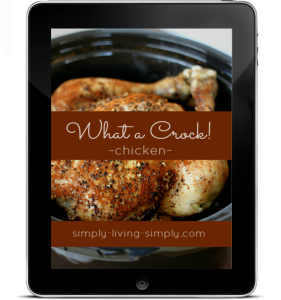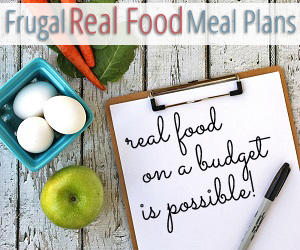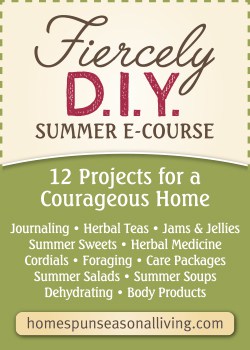One of the most appealing things anyone will learn about herb gardening is how relaxing and simple growing herbs can be. Discovering all the wonderful, various herbs and what they do is a captivating pastime, and can be quite beneficial. You can use herbs for cooking, as medicinal aids such as topical dressings or healthy teas, or simply for decorative plants in the garden.
There are so many herb plants to choose from, it can be a bit daunting to the beginning herb gardener. A good source of information that you probably have is your cookbook, which often devotes a chapter or two to the uses of different herbs as flavorings and accents.
Planting a Basic Herb Garden
Get acquainted with herb gardening by growing herbs you think you’ll use, plus throw in one or two that sound interesting to you. Herb gardens can range in size from small containers to vast outdoor gardens.
To best learn herb gardening, start simple with a small, sunny plot, or use a clay pot filled with potting soil.
The Two Big Needs that herbs have are:
– lots of sun
– well-drained soil
Most herbs have a preference of full or partial sun, and the seed package or nursery will have this information clearly stated. Most herbs will not do well in very wet soil, and watering about every 2-3 days is usually sufficient. Raised garden beds are a good fit for herb gardens. They have excellent drainage and can be easily arranged for proper sunlight.
When planting herb seeds, cover them lightly with soil, and don’t plant the seeds too deep. A good rule of thumb with herb gardening is “the smaller the seed, the shallower you sow.” If you are using young herb plants already started in growing trays, simply transplant them into your pots or garden bed. Sometimes the plants in the trays are dry; if so, water them first before planting them.
Finally, remember that annual herbs (herb plants which only grow for one season and then die) and perennial herbs (herb plants which will return the following year) do best when planted separately. This avoids disrupting the perennial plants’ roots when it is time to dig out the dead annuals. It also prevents leaving dead root pieces behind which can contribute to fungus growth.
Grow Fresh Herbs for Cooking
Cooking with fresh herbs from your garden is a wonderful experience. To get started, here are gardening tips for two well-known herbs that are great for beginning herb gardeners.
Sweet Basil — Sweet basil leaves are good in salads, and are a main flavoring ingredient in tomato dishes such as spaghetti and marinara sauce. In the northern climates, basil is usually grown as an annual plant. In milder climates, sweet basil will return each year on its own, and therefore is considered a perennial plant. Planting: The sweet basil herb is a pleasure to grow because it thrives in average soil, and likes sun or partial shade. Sow the seeds after danger of frost is over, or start them indoors about eight weeks before growing season and then transplant them outside. You can also purchase ready-to-grow starter plants from nurseries and through catalogs. It’s easy to promote the bushiness of the basil plant leaves by pinching and clipping the herb throughout the summer. Use the leaves fresh during the summer growth months, and in the fall, dry the leaves and store them for use during the winter.
Mint — All mints prefer a cool, moist spot in partial shade but will also grow in full sun. I would order plants from a reputable source, or visit a nursery to find plants whose flavor and aroma appeal to you (there are so many to choose from). One plant of each variety you select will soon provide more than enough mint for home use—the big problem is to keep them from overrunning all neighboring plants. Brew leaves into tea, or to garnish cold drinks. Spearmint is generally used to make mint sauce or jelly. Sprinkle dried or fresh leaves over lamb before cooking. Planting: In autumn or spring, plant 4- to 6-inch pieces of root 2 inches deep and 12 inches apart. Water well. Check roots’ tendency to overtake nearby plant roots by sinking boards or bricks 1 foot deep around beds or by planting in a large bottomless plastic bucket sunken into a garden bed.
Chives — Chives are grown for their leaves, which are used for culinary purposes as a flavoring herb, and provide a somewhat milder flavor than those of other Allium species. Chives have a wide variety of culinary uses, such as in traditional dishes among others. Leaves have a mild onion flavor. Chop them and add them to salads, egg and cheese dishes, cream cheese, mashed potatoes, sandwich spreads, and sauces. Use flowers in salads. Planting: Sow seeds in spring or fall, ½ inch deep in rows 12 inches apart. As soon as the seedlings are established, thin within the rows to 6 inches apart. Or set out nursery grown plants in early spring, 9-12 inches apart.
Garlic — (Not really an herb…but it goes so well with them!) Garlic is full of minerals and nutrients, and is known to have great medicinal properties. It is a staple in every chef’s kitchen for cooking dishes from chicken and pasta to seafood and vegetables. We’ve all seen garlic bulbs at the grocery store… but did you know that one simple garlic bulb has enough cloves to begin a garden full of garlic plants? Planting: When spring arrives and the weather has begun to turn warm, prepare a small garden bed in a sunny spot. Take the cloves and place them, pointy side up, in the soil. Plant them in clusters, or rows, and put a light layer of topsoil over them with some compost mixed in. When fall arrives, lift the garlic bulbs out of their bed. Dry the garlic by slicing the bulbs into thin slices and placing them on a rack at room temperature. You can also store the bulbs by braiding the stalks and hanging the garlic in a dark, cool space. You may also freeze the entire garlic bulb!
Learn about herb gardening with these herbs, and then begin to branch out with more. In the meantime, you’ll add wonderful flavors to your recipes, and mouthwatering aromas in the kitchen!
What kind of herbs do you like to grow? Have you started your herb garden yet this year?


























[…] This article was written by Kat from Simply-Living-Simply and can be viewed here. […]